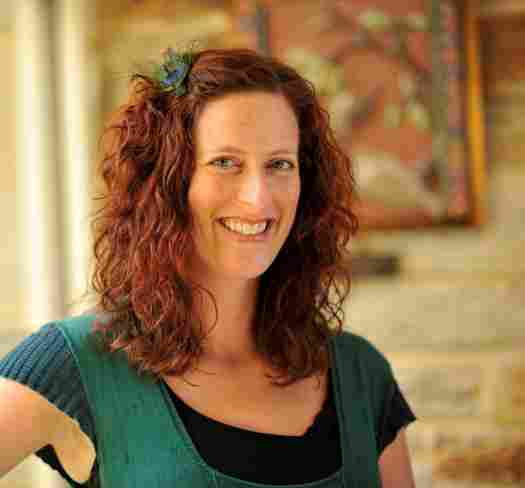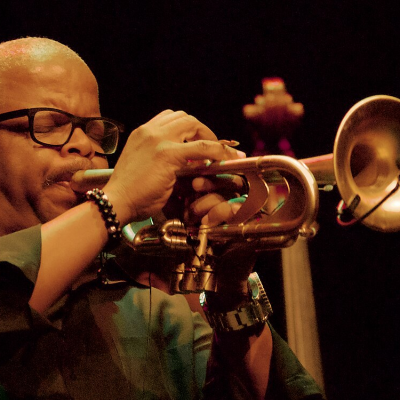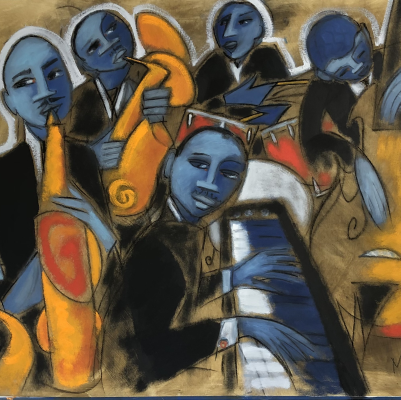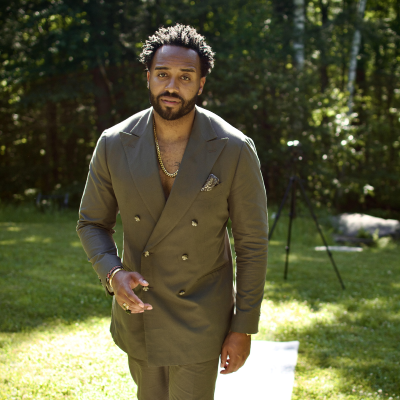
Laura Wexler,
author of
Fire in a Canebrake:
The Last Mass Lynching in America
______________________________________
“Fire in a Canebrake” is a phrase Walton County, Georgians used to describe the sound of fatal gunshots, and the title of Laura Wexler’s critically acclaimed book on the Moore’s Ford lynching of 1946, the last mass lynching in America.
While the book is a moving and frightening tale of violence, sex and lies, it is also a disturbing snapshot of a divided nation on the brink of the civil rights movement and a haunting meditation on race, history, and the struggle for truth.*
Ms. Wexler joins Jerry Jazz Musician publisher Joe Maita in a conversation about the circumstances of the lynching, how it impacted the politicians of the day, accelerated the civil rights movement, and continues to shadow the Georgia community where these murders took place.
_________________________________
“The FBI has established for itself an uncomparable [sic] record for ferreting out persons violating our federal laws. This extends from the prosecution of vicious spies and saboteurs…to nondescript hoodlums who steal automobiles and drive them away across state lines. On the other hand, the FBI has been unable to identify or bring to trial persons charged with federal statutes where Negroes are the victims.”
– NAACP special counsel Thurgood Marshall
______________________________________
JJM How was it that you came across the story of the Moore’s Ford lynching?
LW When I moved to Georgia in 1997, I heard about it by reading an editorial in the University of Georgia’s student newspaper, in which the writer was encouraging readers to join a group called the Moore’s Ford Memorial Committee. I was quite moved by what this committee was doing to commemorate four victims of a 1946 lynching I had never heard of. So, I got into this book in a very modern way, by going to meet some members of the Memorial Committee and working my way back.
JJM What kind of community was Monroe, Georgia at the time of the Moore’s Ford lynchings?
LW It was a fairly small town, and was said by some to be among the more progressive communities of its size in Georgia. It is forty miles from Atlanta, but given the transportation and communication of the day, it might as well have been four hundred. It was a different world. In Atlanta you had black teachers, lawyers — the full range of possibilities. In Monroe, conversely, there was one black man who owned property in the city, the undertaker Dan Young. Most black people worked in what amounted to a feudal situation. By day they may have worked for white landowners, or they were sharecropping. They would farm on a halves or thirds arrangement wherein the landowner often provided land, seed, food and money. When the crops came, and after it was picked and weighed and sold, the sharecropper got what little was left after paying out the white landowner’s share. As a result, they had very little control over their own livelihood. So, most of the men worked in agriculture, and most of the women worked either in agriculture or in white people’s homes.
______
Sharecropping
______
The other thing that was going on was a condition called peonage, which is essentially enslavement by debt. In peonage, because the landowner furnished all the money and seed for farming, you literally couldn’t leave until the crop was picked because money was owed, and the landowner could get you and bring you back. In fact, in the story, Roger Malcom, who was one of the lynching victims, tries to leave the Hester farm at one time, and Weldon Hester chased him across several towns and eventually brought him back forcibly. People were really imprisoned by the debt, which was a function of the socio-economic system at the time.
JJM There was an ironic sort of interdependence in this system. The culture of racism existed for the benefit of whites for so long, but when the black World War II veterans returned home and demanded better treatment, they found that things hadn’t changed and were leaving. Their departure had a negative effect on the white farmers, didn’t it?
LW Absolutely. It signified a loss of control for the landowners, and it stranded them. Walton County was not a mechanized agricultural system at this time. All of the cotton had to be picked by hand, so they required all of this labor. This was another reason why they established this system of peonage, because if all the labor left, all of the cotton would rot in the fields. In fact, Loy Harrison, a landowner who was at the center of this story, always answered police and community suspicion by saying he wouldn’t have been involved in the murder of four of his own farm hands on the eve of the cotton harvest. He had to get his cotton picked. It was a time of transition, for sure, not only with the veterans returning from the war, but also with many of them leaving. Neither situation was beneficial for the white landowners.
JJM What was happening in politics at the statewide level?
LW A primary election for governor was to be held on July 17, 1946. The sitting governor, Ellis Arnall, was said to have been, up to that time, the most liberal governor in Georgia. He had pushed through legislation that appeared to head Georgia in a liberal direction — liberal by Georgia’s standards. A candidate came on his heels, James Carmichael, who hoped to take up where Arnall left off. Everybody thought he was a shoo in — he was an Atlanta businessman, good looking, well spoken, and very much in line with the business people in the state. But out of nowhere, Eugene Talmadge, the former governor who many had thought of as a relic of the past, stepped back into the ring and announced his candidacy in June. What really galvanized him to run was the Supreme Court’s Smith versus Allwright in Texas, which stated that blacks had the right to vote, and that this right was guaranteed by the Constitution. When it was subsequently tested in Georgia by Primus King, it also became known as the Primus King decision. Both ruled the practice of denying blacks the right to vote in primary elections in the South because they weren’t members of the Democratic Party unconstitutional. Therefore, blacks could no longer be denied the right to vote in primaries. Eugene Talmadge told voters that electing him would ensure that no black person voted in Georgia during his four years in office. Throughout the campaign, he is whipping up intense racist sentiment. His stump speeches made it seem as if white people in the state were on the verge of losing everything to black people, and that giving blacks the power to vote was going to be the final nail in the coffin of life as white Georgians had known it. Nobody thought that he would win. They thought he was too extreme and almost too much a parody of himself.
JJM In fact, he didn’t win even though he did. If they had counted the black votes properly he would have lost by 85,000 votes.
LW Yes. It was a situation similar to the 2000 presidential election, in the sense that he won the county unit vote — Georgia’s “Electoral College” — but he lost the popular vote by tens of thousands.
JJM I was surprised at how little power Atlanta had in Georgia’s electoral process.
LW That’s right. Georgia’s legislators had been afraid that Atlanta would turn into a city political machine similar to those in cities like Chicago and Philadelphia. As a way of preventing that, they devised this county unit system, which ensured small towns in rural areas retained a lot of power. Because of this, Talmadge basically avoided Atlanta. He campaigned primarily in rural areas. This strategy, combined with threatening violence on blacks who voted and massive voter fraud is how he won the election.
JJM His tactics were despicable. For example, you wrote of how Talmadge paid black citizens ten dollars to sit among whites in a Carmichael campaign rally for the purpose of demonstrating what life in Georgia would be like if Carmichael were to win.
LW He seems like such a relic, and I believe people honestly thought that. They thought that he was someone who was sort of entertaining but not threatening, and who in 1946 couldn’t get much of a power base, yet he did. He died before taking office, which set off yet another crazy chain of events.
JJM What was the white liberal position in 1946 Georgia toward blacks?
LW Segregation but not terrorization. In other words, they weren’t interested in eating with blacks in restaurants or having their kids go to school with blacks, but they were cognizant of the fact that were they to be characterized as rednecks or lynchers, it would be bad for business, and bad for the state. There was a pragmatic idea that they didn’t terrorize the blacks, that they gave them their rights as mandated by the Supreme Court, and that social segregation, of course, was the rule. They hoped to be seen as progressive in that sense.
JJM I have to admit that when I picked up the book and saw the title “The Last Mass Lynching in America,” I presumed the victims were hung. This in fact was not the case with the Moore’s Ford lynching. Maybe you could clarify the definition of “lynching.”
LW I wish it were that simple. One of the things I write about in the book is that in some ways a lynching is difficult to define, and in other ways you know it when you see it. The act is, of course, a murder, but there is also intent and situation. Tuskeegee University and the NAACP actually defined lynching differently, and as a result they came up with different numbers each year regarding the actual numbers of lynchings. Perhaps the best general definition is any murder committed by a mob, acting without the force of law.
You mentioned that, in general, when you think of lynchings you think of hangings. That’s how most people in America think of them, and certainly that is the iconic image — a Southern tree bearing this strange fruit. That is what we know, and the early lynchings were like that. They were very public hangings amid a circus-like atmosphere, but as we got more into the modern age, lynchings became smaller, more furtive affairs that went “underground.” In the case of the Moore’s Ford lynching, guns were used. Seemingly everyone had guns in the community following World War II. They fired numerous shots into the bodies, left them there and drove away, so the mob members themselves weren’t interested in going public in the way they might have thirty years earlier.
The modern age began to guarantee that no lynching could ever be simply a local affair anymore. You couldn’t keep the news from getting out, and once the news got out there was national scrutiny, leading to the potential of an FBI investigation. And even if they had difficulty prosecuting you, they could make your life pretty awful for a while. This threat of national publicity and scrutiny drove lynchings further under ground and eventually reduced the number of occurrences. Gunshot lynchings were really more the norm for this era than hanging.
JJM In your book you describe lynchings as “the act of individuals who killed, if not with the direct support of the community, at least not with its condemnation. Lynching, in short, was a form of collective violence.”
LW Right. That is the other aspect of lynching that is often difficult to get people to understand, that the key difference between a murder and a lynching is this community aspect — that even if the community isn’t there pulling the trigger or tying the noose with the mob members, those participating in the crime know they are acting with the silent complicity of the community. And the community, by keeping silent about what they know, allows the atmosphere to persist and gives rise to even more lynchings. One of the things that came up frequently in reports from this era was that the white people of Monroe told outside reporters that the entire community should not be condemned for the actions of a few. They were not able to see the lynching as an incident of collective violence.
JJM In fact, there seems to be the idea within the community that the two men, Roger Malcom and George Dorsey, probably deserved to be lynched, but it was because they also murdered two women, Dorothy Malcom and Mae Murray Dorsey, that triggered the country’s anger. If it hadn’t been for the women, it is entirely possible these murders wouldn’t have been noticed.
LW If it hadn’t been for the women, and if it hadn’t been for the fact that George Dorsey was a veteran, that’s right, it may have gone unnoticed. The deaths of the women galvanized the news media, but it was the death of a veteran, George Dorsey — on the heels of so much violence against veterans that summer — that really motivated President Truman to do something.
JJM What was the motive for the community lynching of these four people?
LW The incident that started it off was Roger Malcom’s stabbing of his white landlord, Barnette Hester, on July 14th. It has often been said that most of the reasons given for lynchings were the mere accusation or the actual rape of a white woman, when in fact, the retaliation for the assault of a black man on a white man was more often the reason for a lynching. So, after Roger Malcom stabbed Barnette Hester, Hester was taken to the hospital and Malcom was put in jail. The talk of lynching began almost immediately. This was right at the time of the election, and when Talmadge is elected governor, the state appears headed in a white supremacist direction. But because so much time passed without any harm coming to Malcom, it appears that tempers have died down and the situation may have passed.
Eleven days after the stabbing of Hester, Loy Harrison goes to bail Malcom out, and in the car with him are his other laborers George Dorsey, Mae Murray Dorsey, and Dorothy Malcom. On the way home, the car is ambushed. While everyone assumed right away that the mob only had it out for Roger Malcom and that the other three were “in the wrong place at the wrong time,” once you see that Harrison may have played a large role in the lynching, one has to consider the possibility that he planned for all of them to be in the car, and that it wasn’t just an unlucky accident that they were there.
During the course of my research, everyone I spoke with asked if it were possible there was a reason for the lynching other than Roger Malcom’s assault on Barnette Hester. From that, I was able to uncover the material about George Dorsey’s alleged relationship with white women in the area on and surrounding Loy Harrison’s farm. So, rumors about his sexual activity with white women seemed to have circulated, although it is unclear whether they circulated in the days before the lynching or after. It isn’t possible to know if it contributed to the reason for the lynching.


































